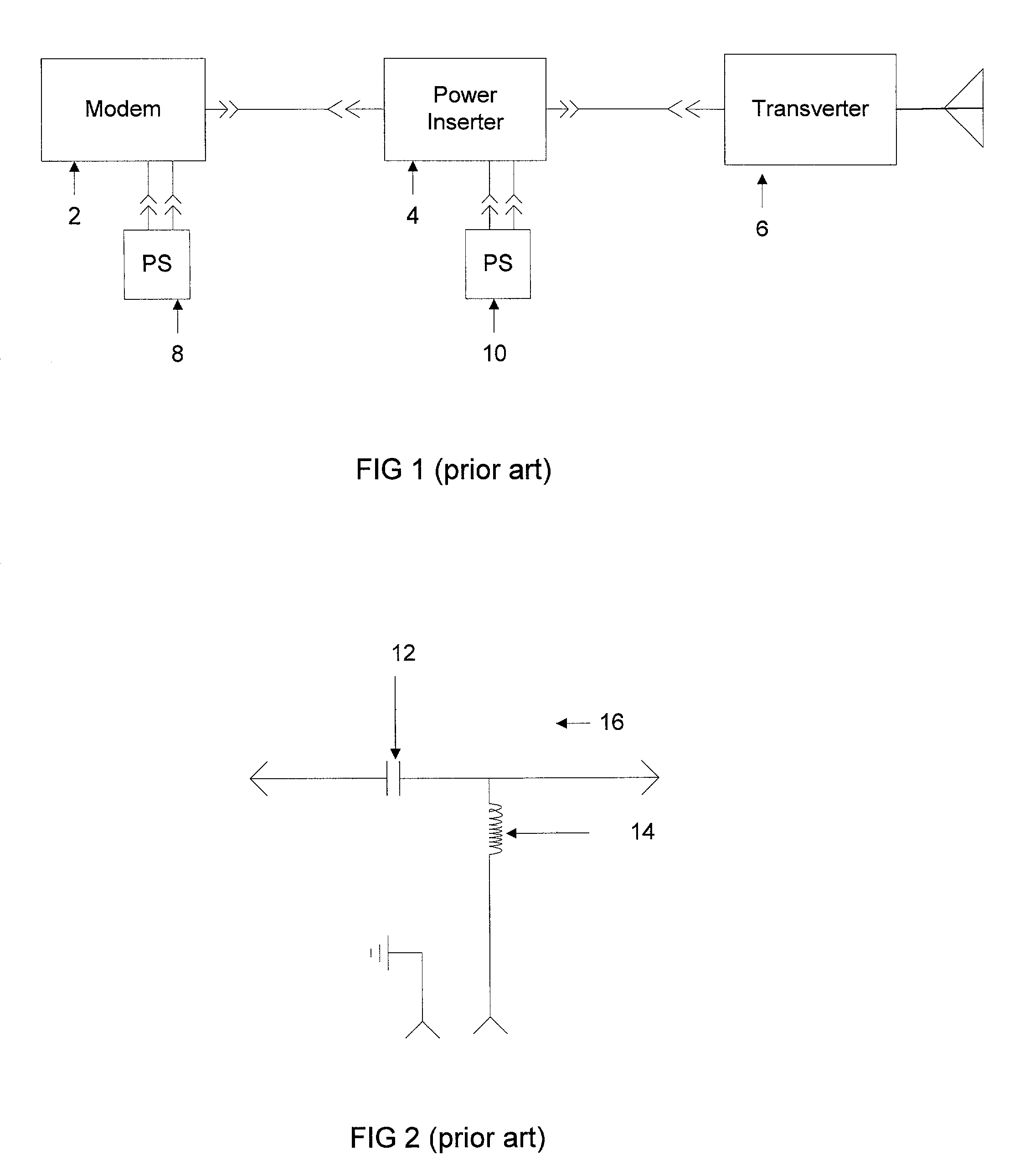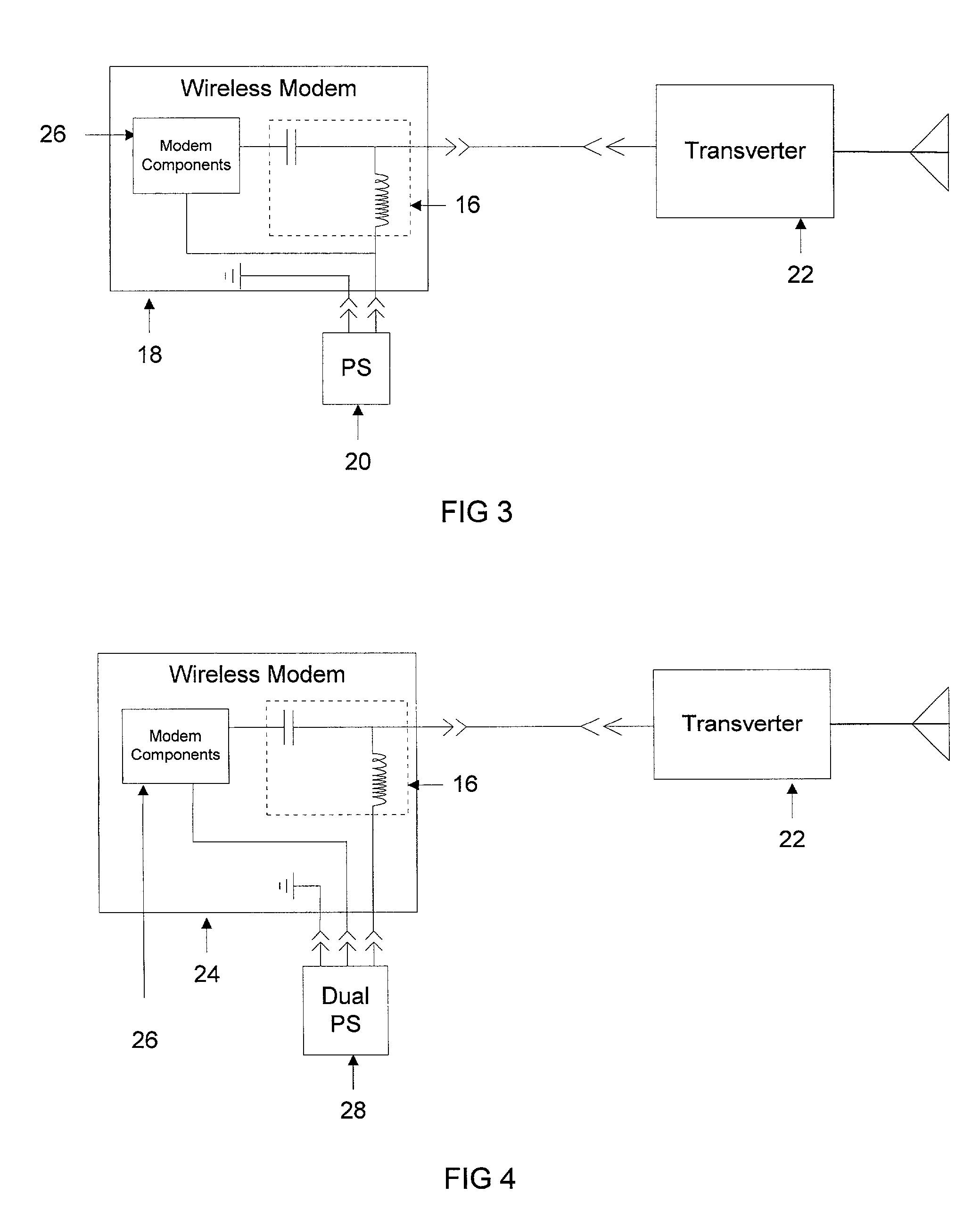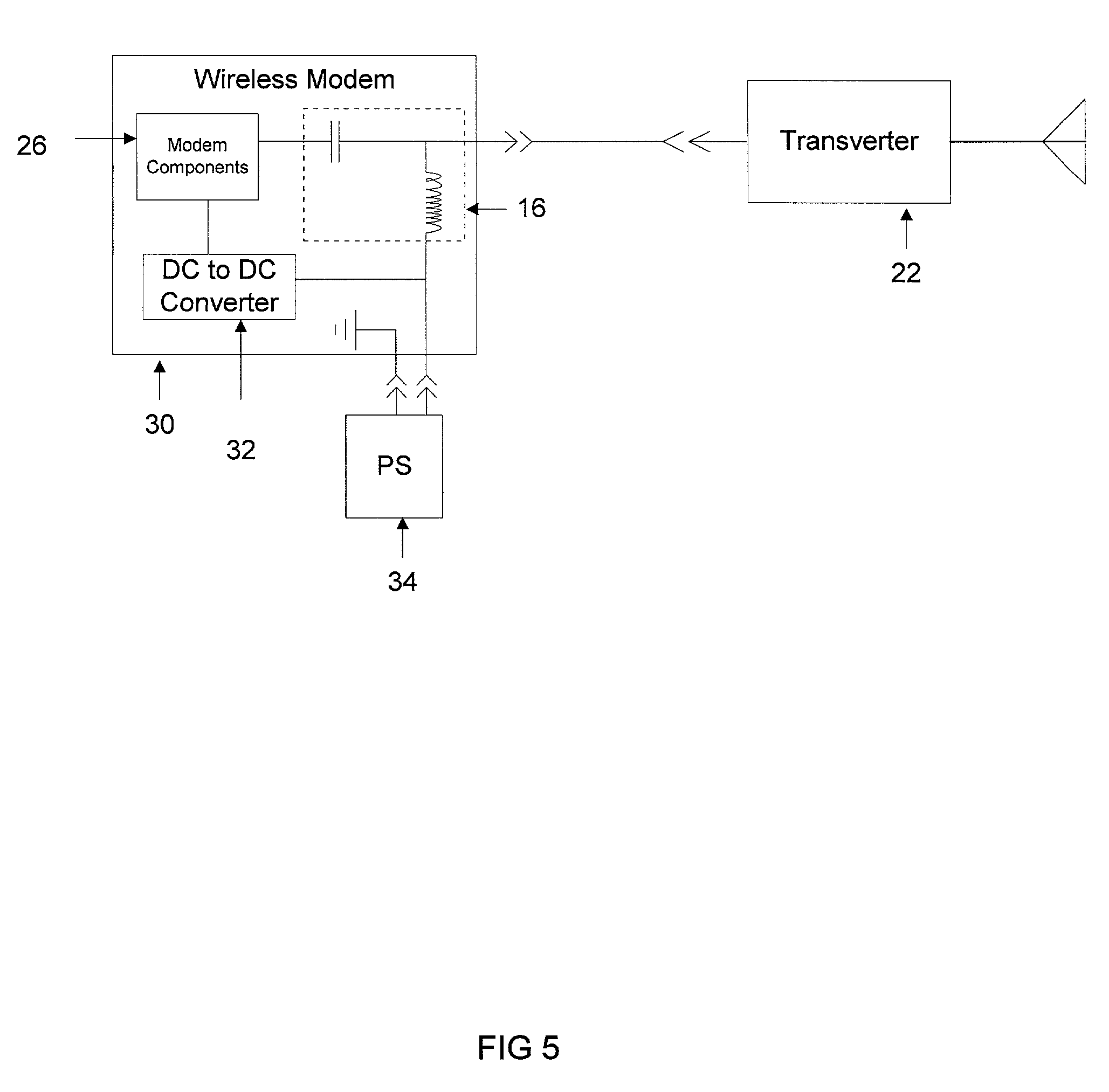Power inserter configuration for wireless modems
- Summary
- Abstract
- Description
- Claims
- Application Information
AI Technical Summary
Benefits of technology
Problems solved by technology
Method used
Image
Examples
Embodiment Construction
[0015] The following description is provided to enable any person skilled in the art to make and use the invention and sets forth the best modes contemplated by the inventor for carrying out the invention. Various modifications, however, will remain readily apparent to those skilled in the art, since the basic principles of the present invention have been defined herein specifically to provide a power inserter configuration for wireless modem systems.
[0016] According to the present invention, a wireless modem 18 includes a power inserter circuit 16 to provide electrical power to a transverter 22 via a coaxial cable, as illustrated in FIG. 3. The wireless modem 18 also contains modem components 26, which is the circuitry traditionally found in modems known by those skilled in the art. The coaxial cable also provides a signal path for data transfer between the wireless modem 18 and the transverter 22. The power inserter circuit 16 shields the output of the modem components 26 from DC ...
PUM
 Login to View More
Login to View More Abstract
Description
Claims
Application Information
 Login to View More
Login to View More - R&D
- Intellectual Property
- Life Sciences
- Materials
- Tech Scout
- Unparalleled Data Quality
- Higher Quality Content
- 60% Fewer Hallucinations
Browse by: Latest US Patents, China's latest patents, Technical Efficacy Thesaurus, Application Domain, Technology Topic, Popular Technical Reports.
© 2025 PatSnap. All rights reserved.Legal|Privacy policy|Modern Slavery Act Transparency Statement|Sitemap|About US| Contact US: help@patsnap.com



